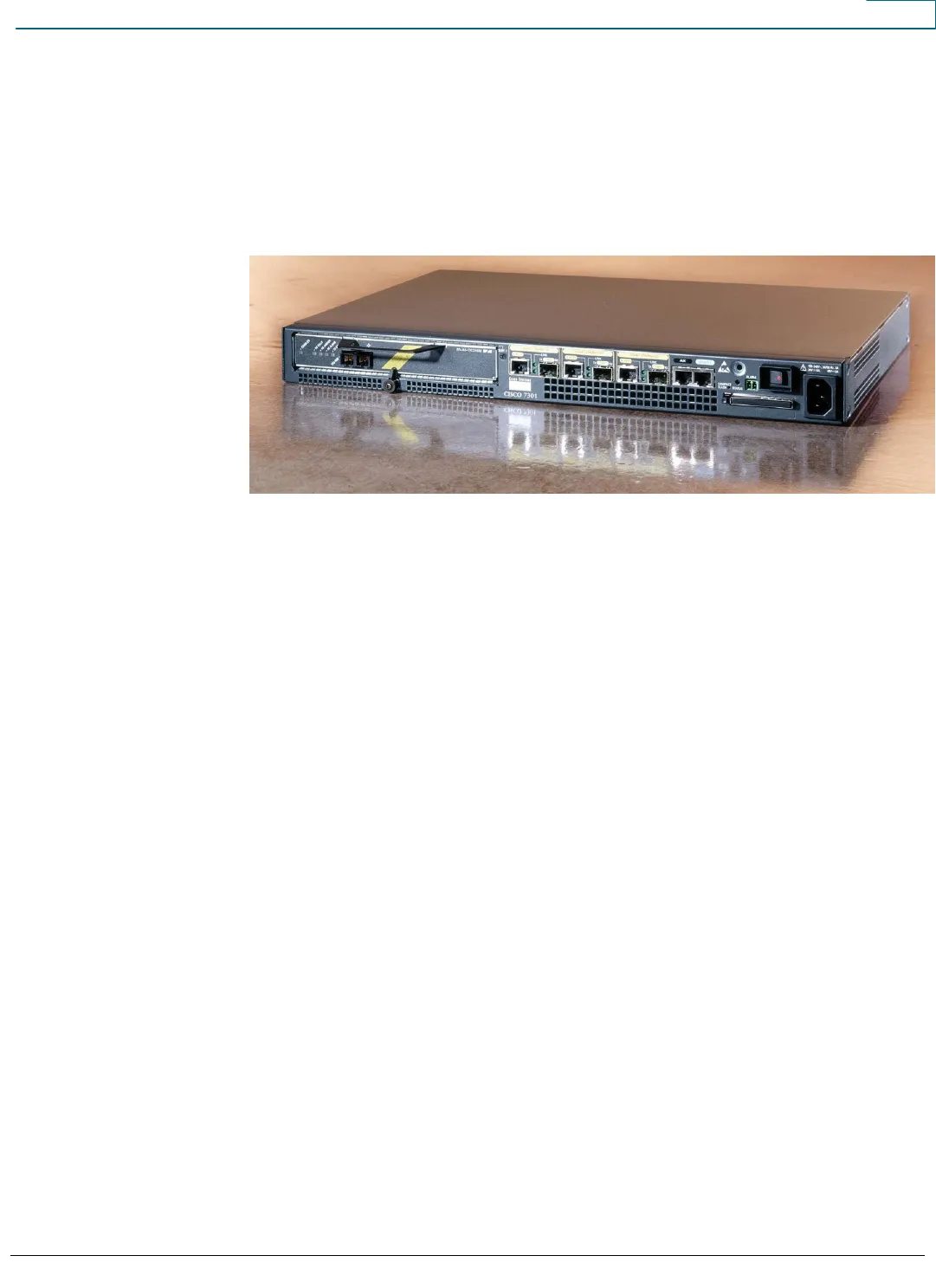
Data Sheet
© 2008 Cisco Systems, Inc. All rights reserved. This document is Cisco Public Information. Page 4 of 8
Cisco 7301 faceplate, any of which may be active at any time. The RJ-45 interfaces have the
option of running at 10-Mb Ethernet, 100-Mb Fast Ethernet, or 1000-Mb Gigabit Ethernet over
copper. Industry-standard SX, LX/LH, and ZX SFP Gigabit Ethernet transceivers provide Gigabit
Ethernet connectivity over fiber.
Figure 1 illustrates these ports.
Figure 1. Cisco 7301 Router LAN Ports
Connectivity
The Cisco 7301 includes a single Cisco 7000 Series port adapter slot, which protects existing
customer investment in interfaces and simplifies sparing.
The Cisco 7301 offers scalable density with a wide range of interfaces including:
●
Ethernet, Fast Ethernet, and Gigabit Ethernet
●
Serial and multichannel T1/E1 and T3/E3 interfaces and packet-over-SONET (POS) OC-3
●
OC-3/STM-1 POS, T3/E3 and OC-3/STM-1 ATM, and T1/E1 Inverse Multiplexing over ATM
(IMA)
●
ISDN Primary Rate Interface (PRI), Basic Rate Interface (BRI), and High-Speed Serial
Interface (HSSI)
●
Support for hardware encryption and Layer 3 compression (VPN accelerator modules)
For a detailed list of all port adapters supported on the Cisco 7301 Router, please contact your
Cisco sales representative.
The Cisco 7301 architecture is based on a new memory architecture type called double data rate
(DDR) memory. This new form of memory roughly doubles the speed of access to system
memory. In a store-and-forward router such as the Cisco 7301, this feature provides a clear
advantage because each packet must be individually stored in memory, rewritten by the system
CPU, and then transmitted out of memory to the outbound interface.
The Cisco 7301 supports DRAM of 512 MB (default), upgradable to 1 GB. There are two DRAM
memory slots, so 1 GB consists of two 512-MB small-outline dual in-line memory modules
(SODIMMs).










